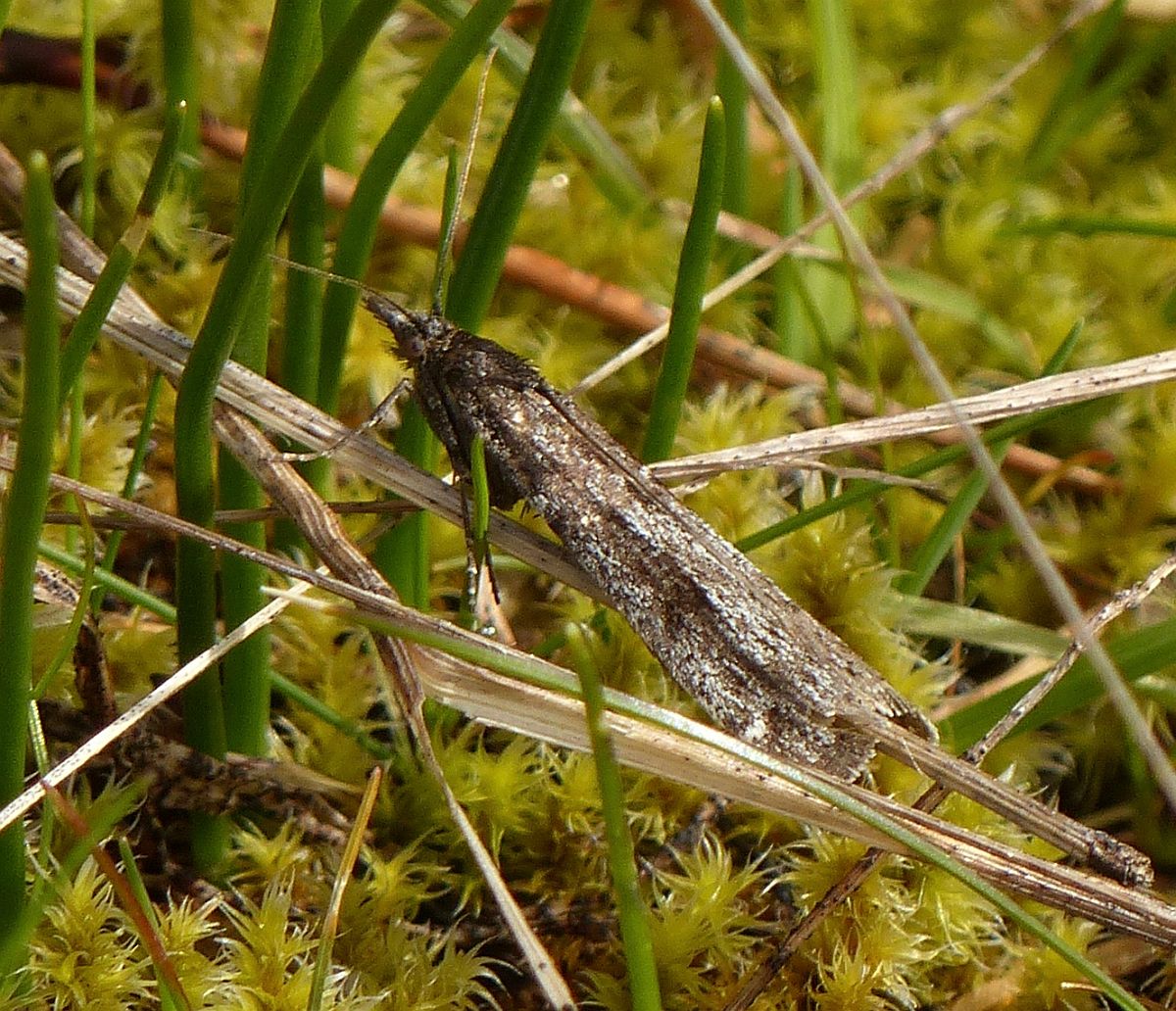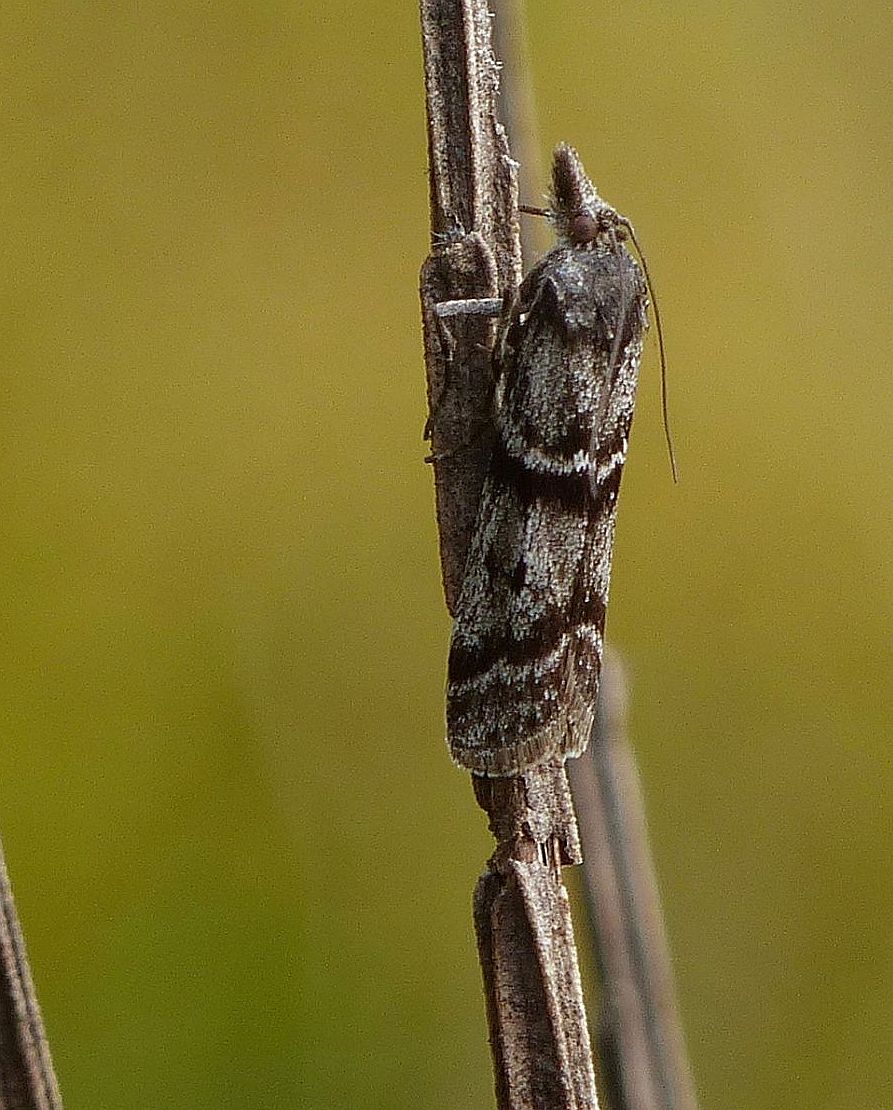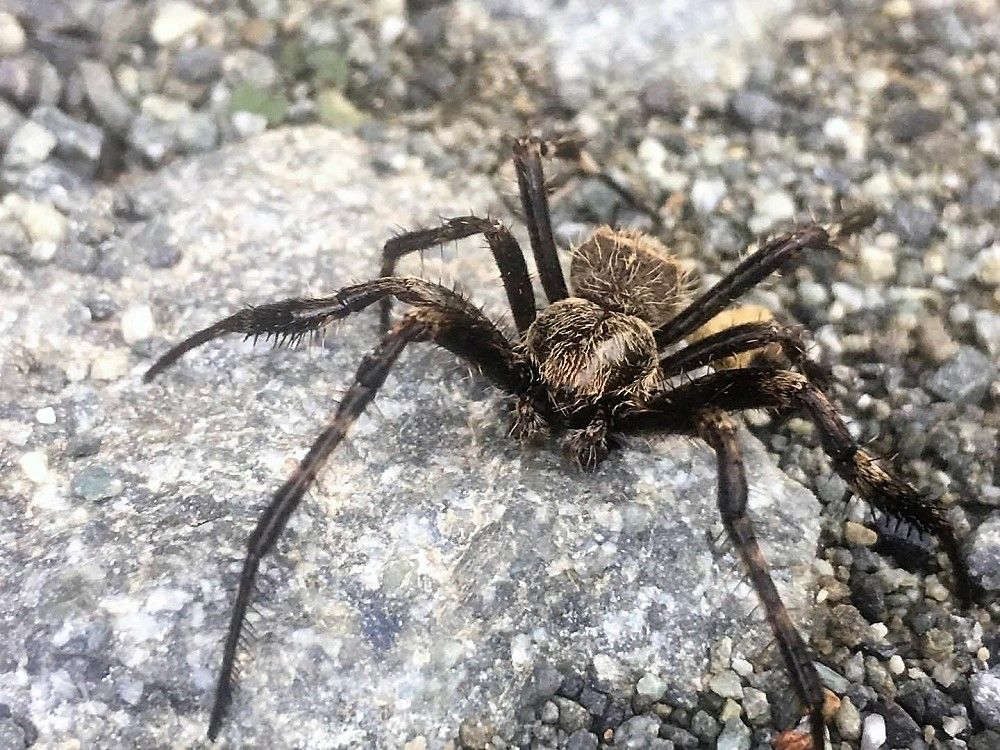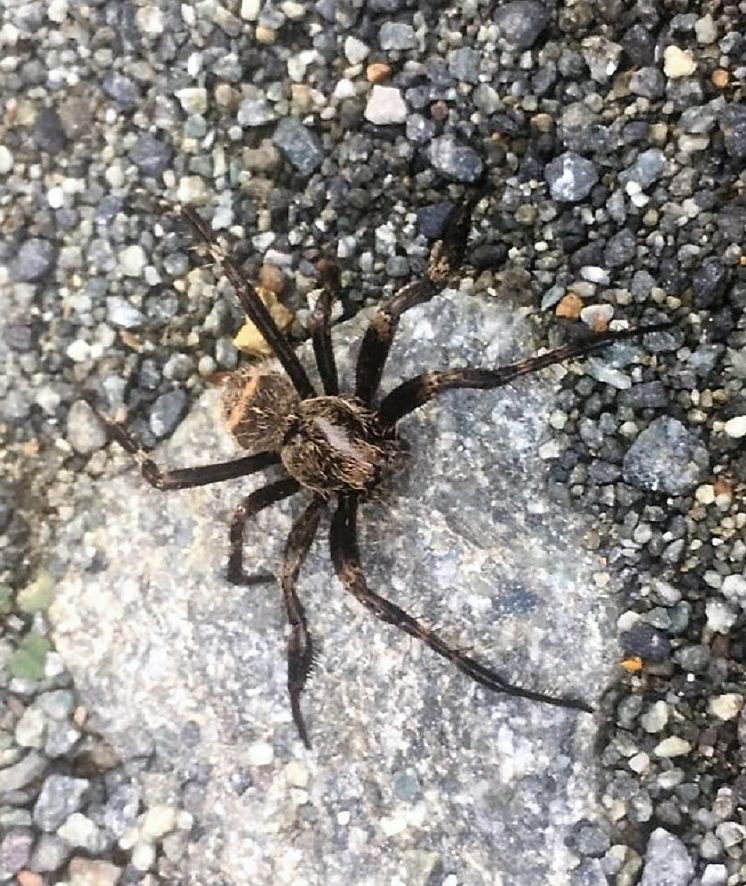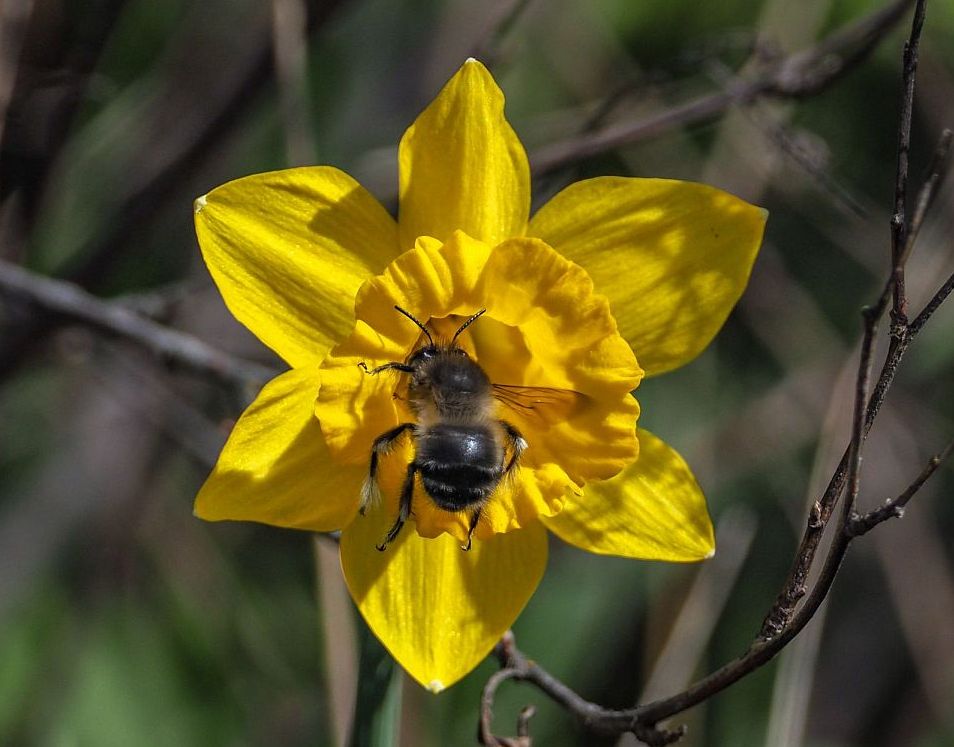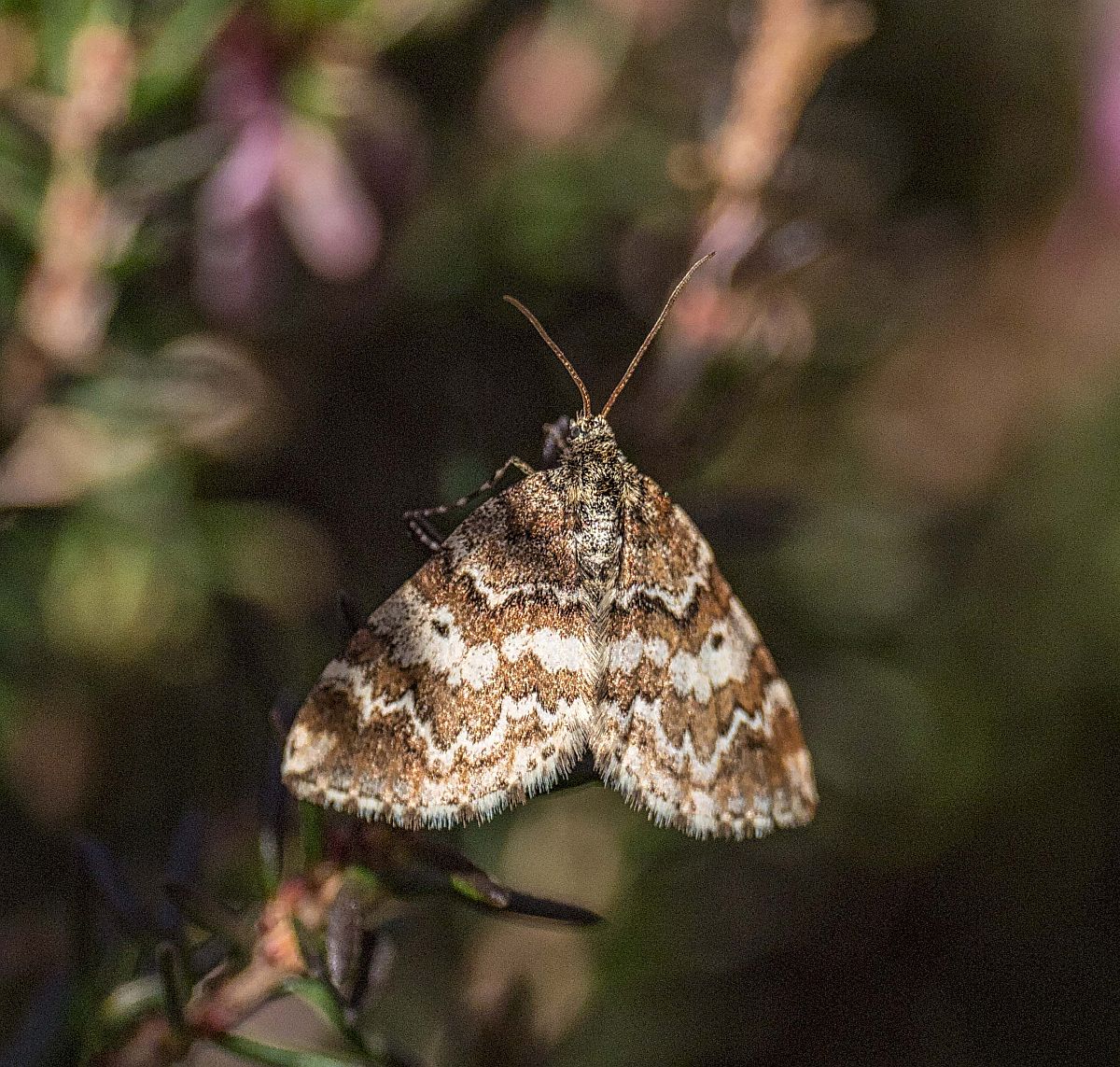2018 March 23
Jeremy Tatum writes: I thought I’d put together here the three photographs of the unknown pyraloid that have appeared on this site.
1. Photographed by Rosemary Jorna, Peden Bluffs, 2016 March 21. Invert Alert 2016 March 30.
2. Photographed by Moralea Milne, Camas Hill, 2018 March 15. Invert Alert 2018 March 18.
3. Photographed by Moralea Milne, Camas Hill, 2018 March 21. Invert Alert 2018 March 22.

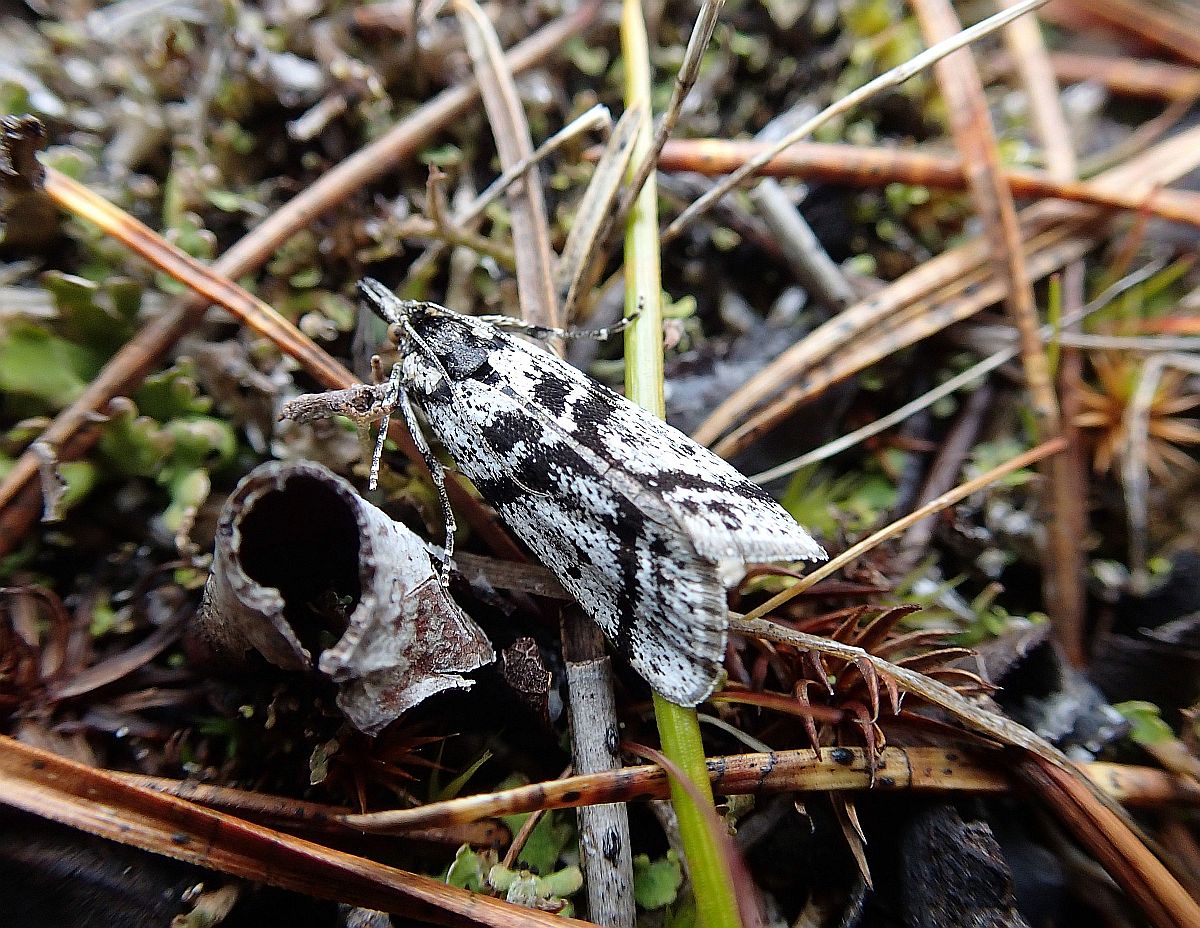
Unknown pyraloid Rosemary Jorna

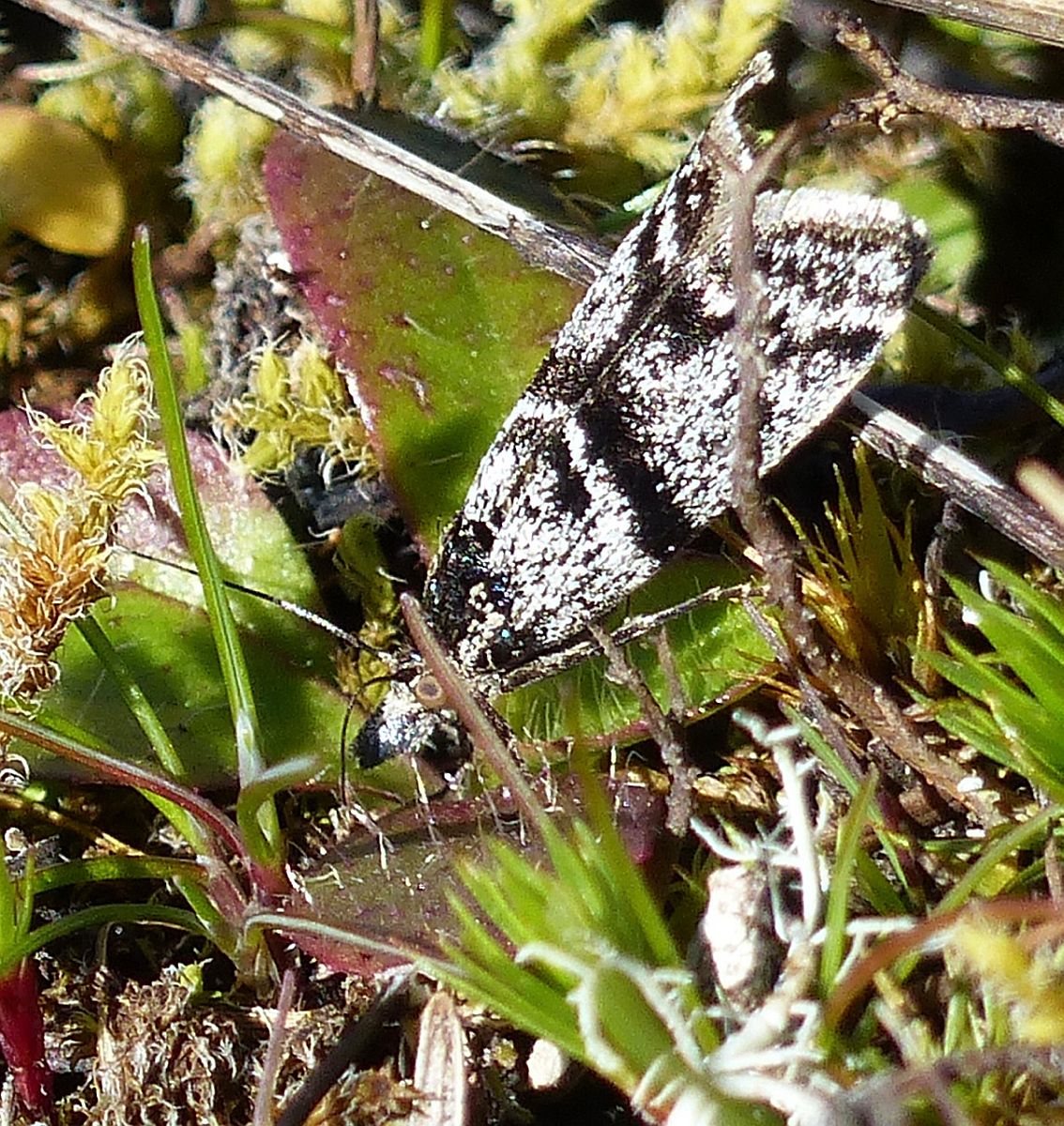
Unknown pyraloid Moralea Milne

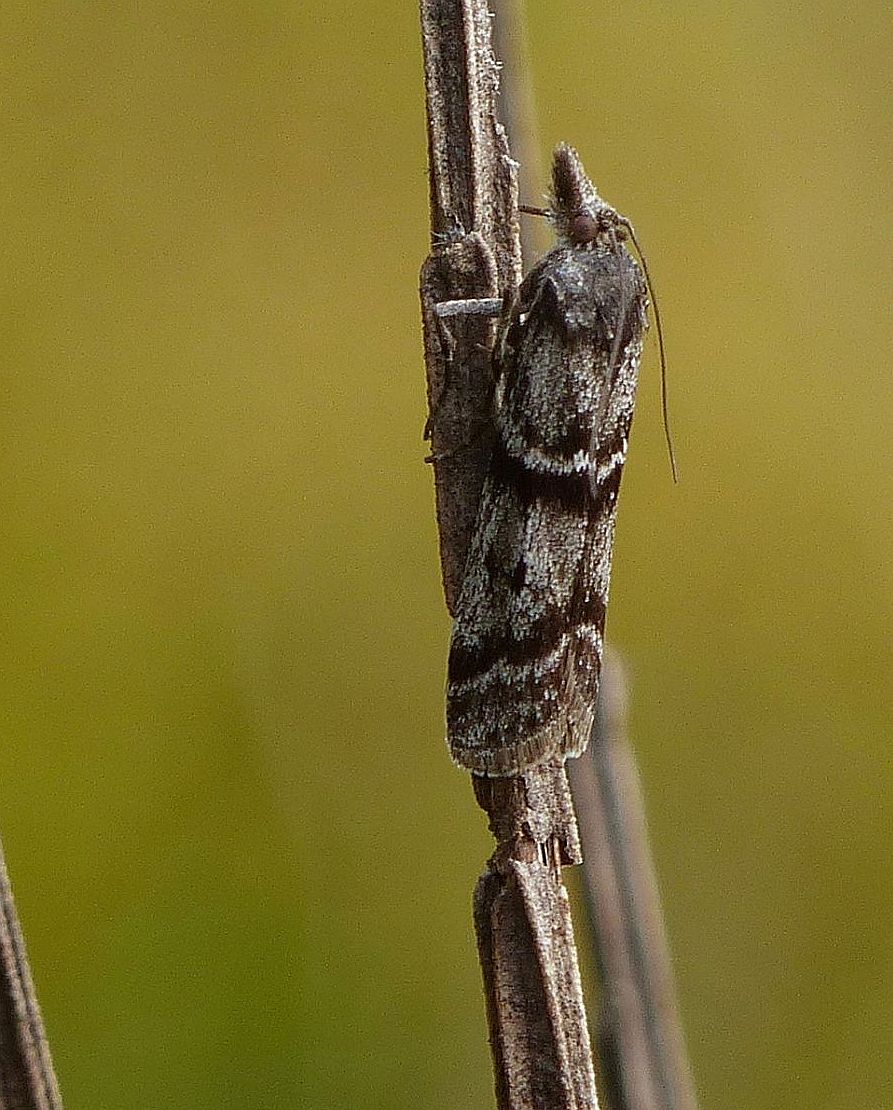
Unknown pyraloid Moralea Milne
A possible identification suggested by Libby Avis is Sarata caudellella (Pyralidae – Phycitinae). It closely resembles a moth that Libby photographed in Port Alberni in 2009 – see Bug Guide under this species. Although the species is not on the Pohl et al. B.C. list, there are records for Alberta and Washington.
According to MONA, the larval foodplants of Sarata are unknown. However, many years ago I reared a phyticine caterpillar from Vaccinium ovatum. I have no photographic or other record, though my memory is that the moth that emerged may have been this or a similar one. This is about as vague as it could be, but, combined with Moralea’s observation (see March 28) of one flying out of a Manzanita bush, it suggests that any micro caterpillar found in an ericaceous shrub would be well worth rearing.
While on the subject of insects that are difficult to identify, the ichneumon shown below was in my Saanich apartment this morning. Shall we say that it bears some resemblance to Ophion luteus – but I wouldn’t want to put that down as a definitive identification.

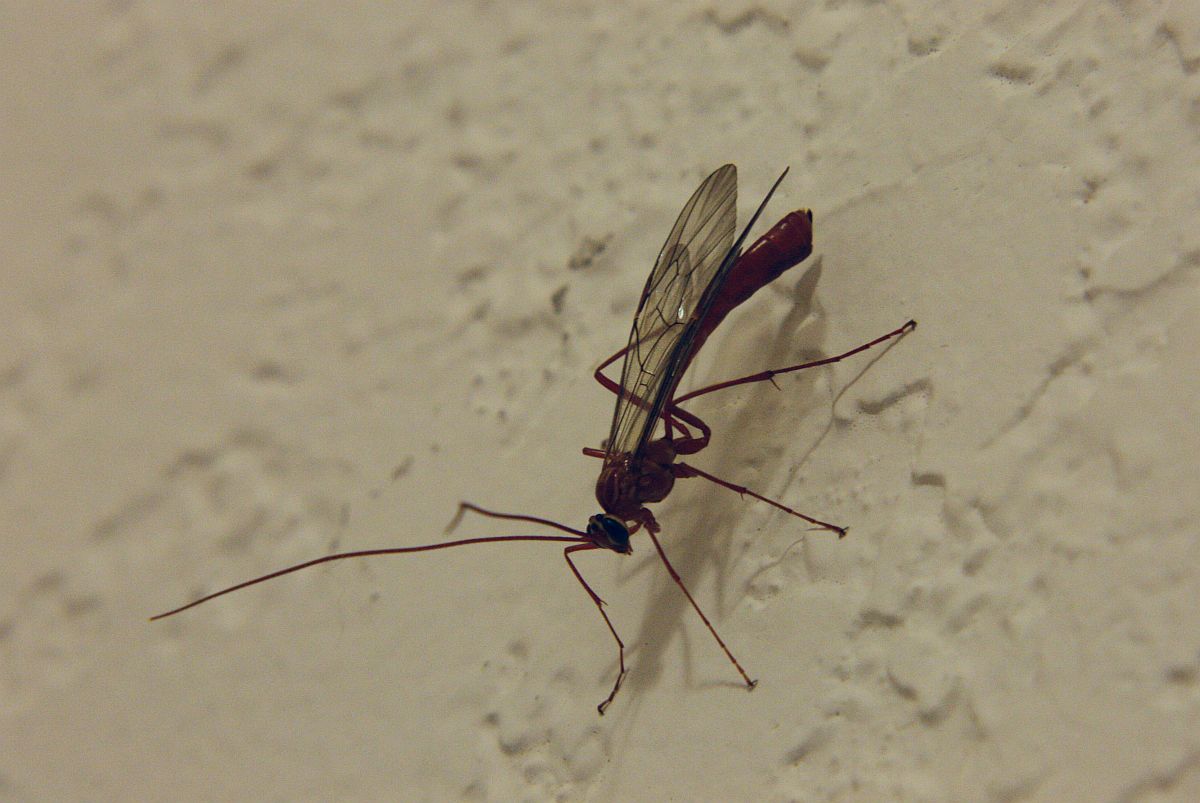
Insect bearing some resemblance to Ophion luteus (Hym.: Ichneumonidae)
Jeremy Tatum

